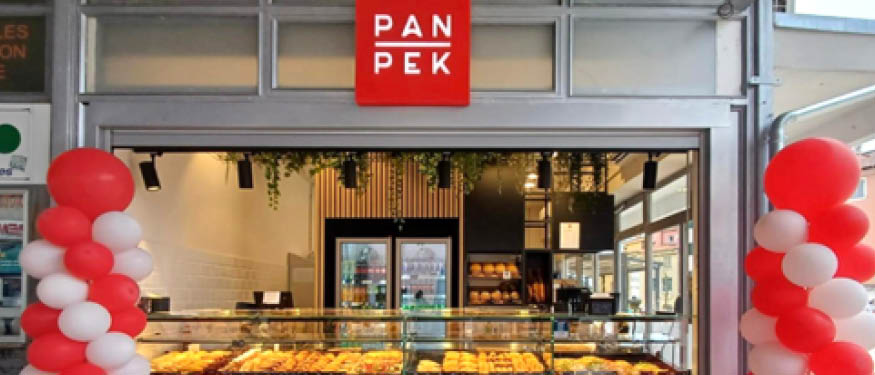Following a tumultuous year marked by the ongoing conflict in the region and rising financing expenses, we reached out to experts across CEE to gain a deeper understanding of the real estate landscape, including key factors driving the industry and the primary obstacles it faces.
Resilience and Endurance
In the Czech Republic, Hungary, Romania, and Ukraine, the most sought-after real estate assets in the past year, despite the ongoing challenges, have been logistics and industrial properties, while in Serbia and Croatia, the residential real estate segment still has the spotlight.
Logistics and Industrial: the factors leading to the surge in demand for logistics and industrial real estate differ across CEE jurisdictions. In the Czech Republic, high demand is related to the COVID-19 pandemic: “during the pandemic, there was an enormous interest in new logistics premises coming from e-shops,” PRK Partners Partner Roman Pecenka notes. “Although the pandemic is already over, the e-shops have leased all the free logistics premises that were available on the market at that time.” Consequently, he says, due to the lengthy and burdensome permitting process, “the current offer of free assets is clearly not sufficient for the current needs of the sector.”
Similarly, Tuca Zbarcea & Asociatii Partner Razvan Gheorghiu-Testa highlights that, in Romania, the demand for logistics real estate is linked to “the tremendous development of the retail sector in recent years,” as well as “to the absence of highways linking Romania’s main geographical areas, both factors leading to the development of regional logistics hubs.”
According to Nagy es Trocsanyi Managing Partner Peter Berethalmi, in Hungary, the increased demand for industrial and logistics real estate is related to the increase in product volumes stored in warehouses: “20 to 30% more products are stored in various warehouses, so demand is high for the logistics and warehouse type, while industrial properties are mainly being traded in the countryside, due to an increased demand for industrial lots.”
Meanwhile in Ukraine, according to Avellum Partner Maksym Maksymenko, high demand in the logistics and industrial real estate segments is related to the war: “due to the active warfare, many businesses relocated to the western and central regions of Ukraine, primarily e-commerce, FMCG, and food businesses,” he notes, highlighting that these businesses are looking for new facilities to resume their operations. “As a result, and considering that in most regions a lot of warehouses and storage facilities were destroyed by Russian attacks, developers and investors are constructing new logistics facilities to satisfy that rising demand,” he notes.
Residential: on a different note, the real estate market in Serbia and Croatia is primarily driven by the residential segment. “Official data shows that the residential segment and, specifically, the sales of apartments dominate the sector in Serbia, with more than 55% of total transactions in 2022,” Gecic Law Senior Associate Milos Petakovic says. “An important factor is the significant influx of migrants, which initially affected the leasing market but is steadily transitioning into real estate purchases. Moreover, a number of new attractive locations, especially in bigger cities, were used for the development of residential complexes, which increased the quality of the offer and further spurred demand.”
Similarly, Cipcic-Bragadin Mesic & Associates Partner Marina Mesic says the high demand in Croatia is related to “especially young families that are seeking to resolve their housing problem, while, at the other end are people who are buying real estate as an investment and a way of preserving money value.” According to her, “there is an increased demand for apartments bought by young people using a housing loan that is partly financed by the government and has favorable interest rates.”
Industry Growth Hamstrung by Legislation and Administration
Although some segments of the real estate industry are experiencing heightened levels of activity, the legislative framework does not always seem to be able to keep pace with this rapid progress. Lawyers point out that in Romania, Ukraine, and the Czech Republic, the main industry hurdle is related to obtaining building permits.
“In Bucharest, the main problem is the absolute deadlock at the local administration level, where very few new building permits have been issued and almost no new urban planning documentation approved for quite some time now,” Gheorghiu-Testa notes. “This translates into an extremely low number of new projects, with direct consequences both for the rental market and the investment market.”
Similarly, the key legislative hurdle in Ukraine according to Maksymenko, is that “at present, if the investor follows the general construction legislation, they will spend about one or two years allotting the land plot, amending local town-planning documentation to meet construction needs, and obtaining the necessary data to start designing the building. This not only slows down the construction process but also wastes investors’ resources.”
Pecenka agrees with both, saying that in addition to the extremely long permitting process, the problem “is being multiplied by the old zoning plans of cities.”
Another major impediment to the development of the sector, according to both Mesic and Petakovic, is related to unresolved ownership issues: “the main obstacle in the further development of the real estate sector and its investments are unresolved ownership relations and the slow judiciary,” Mesic says. In Serbia, Petakovic notes there are “long-standing issues of ownership over the land of previously privatized companies,” but “new legislation has been announced that would further digitalize and expedite this process.” Still, he says “a major hurdle remains in resolving the issue of approximately two million structures that have been built in the past without a construction permit, which are still being legalized and are excluded from the market.”
Financing Adds Insult to Injury
On top of all those country-specific obstacles, several CEE jurisdictions have encountered challenges with real estate financing in the past year. “The local real estate financing market follows the trends in the larger CEE region,” Gheorghiu-Testa notes. “In the current economic context, when debt has become much more expensive and financing conditions across the region have worsened, Romania could not be an exception. Thus, financing costs are higher, banks are more selective in lending money, and developers are more cautious in accessing financing.”
“As of now, in Ukraine, the critical issues for effective financing are the absence of war risk insurance and a transparent investment mechanism for rebuilding,” Maksymenko continues. “Solving these two issues will significantly help attract private investments in the real estate sector and the Ukrainian economy in general. Until these issues are addressed, a lot of investors will stay wary of the market and wait until a transparent, competitive, and secure investment climate emerges.”
Serbia, on the other hand, went all cash. “Interestingly, bank loans were a source of financing in only 11% of transactions in 2022, which makes the real estate market resilient to the current decline in credit activity,” Petakovic says. “However, as credit policies tighten, this may cause a decline in new major developments.”
It Could Be Worse
While pointing to some potential slowdowns in the next few months, the lawyers do not predict a dramatic change. “The sector is expected to continue to grow during this year, albeit at a slower pace, as the most prominent projects and market influencers are still ongoing,” Petakovic notes. “With a decline in housing loans and the overall economic circumstances, the number of transactions will likely drop, but not decisively.”
“The industrial and commercial segments will grow, prices will also rise, and office building demand will stabilize as the market needs to respond to the new service charge, ESG, and fit-out cost issues. Residential properties will not collapse either, but there will be fewer transactions overall,” Berethalmi sums up.
This article was originally published in Issue 10.3 of the CEE Legal Matters Magazine. If you would like to receive a hard copy of the magazine, you can subscribe here.






















